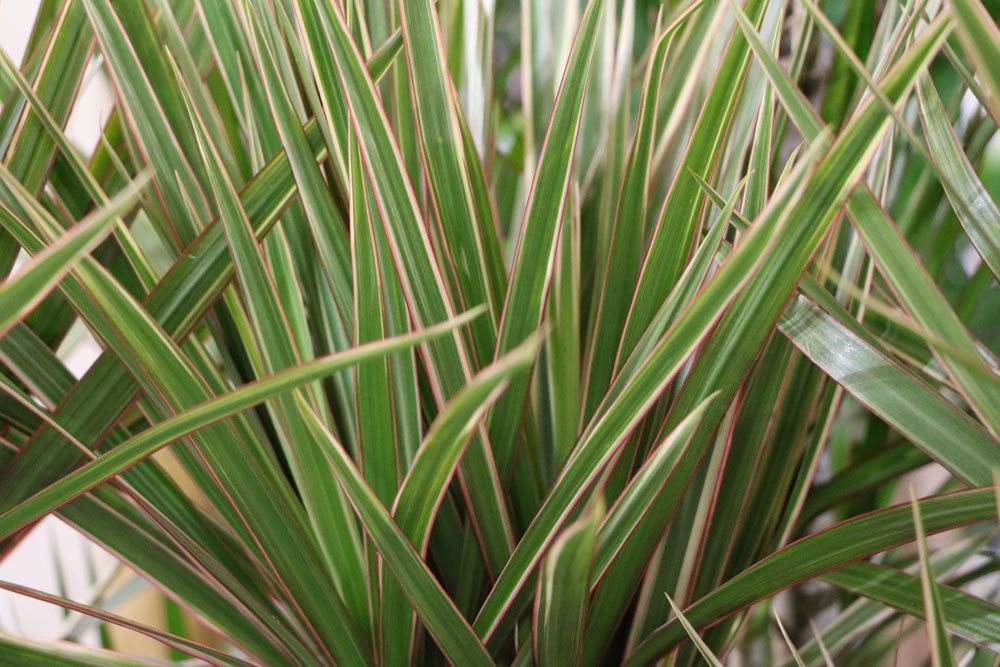Dragon tree, botanically Dracaena, is a popular houseplant. In appearance, many dragon trees resemble a palm tree, but dragon trees and palms are, botanically speaking, only very distant relatives. Dragon trees come in many species. The most commonly cultivated as a typical houseplant in our area is the Canary Island dragon tree (Dracaena draco), which, like all other varieties, contains toxins that can cause poisoning symptoms in pets if they nibble on them. How dangerous a dragon tree actually is for cats is assessed differently. But one thing is certain, caution is advised in any case.
Contents
Poison
The substances in all species of dragon tree that are toxic to all cats are the so-called saponins, which the plant carries in high concentrations. The saponins are formed by the dragon tree to deter predators. They are therefore a natural protection of the dragon tree. The poison is found in the leaves and roots of the dragon tree, those parts of the plant that are particularly worthy of protection from their point of view. The saponins develop their poisonous effect on cats when the darling nibbles on the plant and the poison thus enters the bloodstream.
If the cat only touches the dragon tree, this is usually harmless for the pet. However, if some leaves have open wounds, such as those caused by cutting off brown parts of the leaves or bending them, even light contact with them can result in the ingestion of the poison. This is because it takes several hours for the plant sap to dry up. Thus, the poison can get on the fur of the cat and is then finally absorbed through the tongue when brushing the fur.
Symptoms of poisoning in cats
In cats, the mucous membranes are already irritated by contact with the plant. Thus, licking the plant is already a danger for the animal. What kind of poisoning symptoms are present in the cat depends on the amount of saponins that have entered the blood. Poisoning by the dragon tree should be thought of when the following symptoms appear.
- diarrhea and vomiting
- Cramps
- trembling
- increased salivation
- disturbances of movement and balance (staggering)
Unfortunately, these are not the only reactions that nibbling on the dragon tree can cause.

Thus, the poison subsequently leads to:
- Circulatory disorders (staggering)
- Decomposition of red blood cells
- Damage to the central nervous system
If the cat ingests the poison unnoticed over a long period of time, the poisoning eventually leads to cardiac arrest and organ failure. In addition to the amount of poison ingested, the cat’s age and health status also play a role.
Particularly at risk are:
young and very old cats
Cats with debilitating diseases
In these animals, even very small amounts of the poison can cause poisoning.
Tip: If a healthy adult cat nibbles on the dragon tree once, this does not necessarily lead to poisoning. However, if the cat does this daily, the saponin level in the blood increases continuously, and poisoning is not absent.
Help in case of poisoning
If the cat is not observed nibbling, it is difficult to estimate how much poison it has ingested. Also nibbling traces on the plant itself are an insufficient indication. Therefore, if poisoning with the plant sap is suspected, a veterinarian must be consulted immediately or the veterinary emergency service must be called outside of opening hours.
First aid for the cat
When giving first aid to cats, the rule for the cat owner is to stay calm. If you are lucky and catch the cat directly nibbling, get the plant remains out of its mouth immediately. Do not dispose of the remains, but take them to the veterinarian. Do not even try to make the cat vomit. This often does more harm than good.
If the cat has convulsions, it must lie softly so that it cannot injure itself. A suitable place is, for example, a well-padded laundry basket. If the cat has vomited, the remains and mucus must be removed from the mouth.
Preventive measures
Actually, their instinct should protect cats from poisonous plants. However, this natural protection has been lost in our domestic cats. So now the pet owner must take over the protective role.
The safest protection for cats is to not cultivate a dragon tree. If you are thinking of buying a dragon tree, it is better to do without the houseplant for the good of the cat. If you already have a dragon tree, it does not have to be removed immediately. First observe whether your cat likes the houseplant. Because not all cats nibble on the dragon tree. But this can change. So the cat can ignore the dragon tree for years, and out of the blue it becomes the cat’s favorite plant. Typical cat!
Tip: You can try to make the almost impossible possible: Get your cat to stay away from the plant.
One way to save the dragon tree and protect the cat is to place the houseplant so that it is out of the cat’s reach. Since cats will actually go anywhere they want, it’s best to place the dragon tree in rooms that are off-limits to the cat.
Tip: If possible, do not leave the cat alone with the dragon tree.
So that the cat may not even “notice” the dragon tree, offer her cat grass and put a scratching post. Young cats are easily distracted with toys. Many cats discover the houseplant only out of boredom, also because it is so good to play with the leaves.
If the cat still does not leave the houseplant, you can try the following tricks to scare the cat away.
- Sprinkle pepper on the soil
- put garlic on the soil
- rub some leaves with a little vinegar
Since cats do not like these scents, they should avoid the plant in this way.

